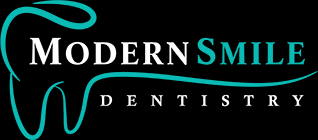Dental Sealants
Dental Sealants are a great way to protect your teeth from harmful bacteria that cause tooth decay and cavities. Food often gets stuck in the grooves within the molars and can create an ideal environment for bacteria to floorish. By adding a Sealant to your chewing teeth, you can create a protective barrier against the harmful bacteria as a preventative measure to avoid bad oral health and tooth decay.
“We give you a reason to smile!”
What is the Process of Getting Dental Sealants?
Dental sealants are a non-invasive, simple procedure to aid in the defense of cavities. Each tooth will only take a few minutes and anesthesia is not required during this procedure.
Ideally, sealants will be recommended after a dental cleaning to best their chances of success. The teeth will need to be cleaned and polished with pumice. Pumice will be used as a form of polishing abrasive product to remove all the debride. The teeth will then be rinsed and dried thoroughly. A material called, dental etch, will then be used to allow the sealant to adhere to the tooth’s surface. This material will remain on the teeth for several seconds then be rinsed and dried.
From this stage on, it is very important to isolate the teeth from saliva, water, and other contaminants, so gauze and cotton rolls will be used to isolate the tooth being treated. The sealant will be applied and light-cured (hardened). Your occlusion (bite) will be checked to make sure it feels comfortable and natural. Once confirmed, you are done. While sealants are wonderful at helping in cavity prevention, it will be critical that proper oral hygiene techniques are still performed. Your sealants will be reviewed at each dental examination to ensure their longevity. If you have any questions or concerns, please ask your dentist regarding dental sealants.
Who is a Candidate for Dental Sealants?
Dental sealants can be used for all aged of people, however, even though they can, generally sealants are not used on babies. Sealants can help protect your teeth from deay when there are deep crevices or grooves in the top or chewing surface of your teeth. The deeps sections of your teeth can easily harbor bacteria and make it difficult to remove with normal day to day brushing.

Sealants for Primary Teeth (Baby Teeth)
While this is possible, sealants are not usually placed on baby teeth unless deep grooves are present or the patient is high caries (decay) risk. We will make recommendations as needed. Since x-rays are not generally performed on babies, we will thoroughly review your baby’s mouth visually to ensure any issues are proactively identified.

Sealants for Children or Teenagers
The most important age to consider sealants is around the age of 6. The reason is that as we lose our primary (baby) teeth, our permanent (adult) teeth begin to erupt (coming out). At this age, we have one of the most important teeth erupting, our first molars. These teeth tend to have deeper grooves so sealants can be a wonderful option to keep them cavity-free. These teeth are very important when it comes to chewing as they tend to have a large surface area, which allows for a greater area to chew. Often times fluoride, which is a natural mineral, can also be recommended to ensure your child’s teeth remain free from decay.

Sealants for Adults
As adults, we tend to have all of our permanent teeth. Sealants can be utilized when deep grooves are present or to replace the material that has been worn. We will monitor your sealants on each dental visit to ensure they remain intact for optimal functionality. It is imporant to maintain your oral health at home with the proper home dental cleaning practices.

